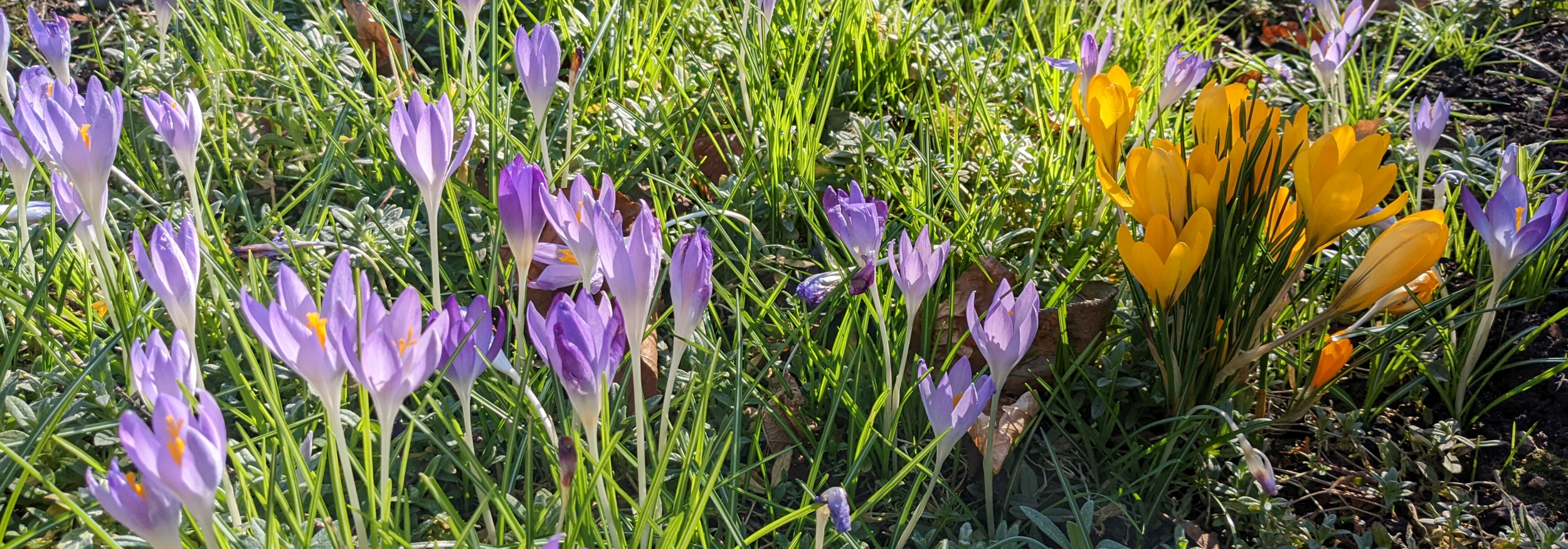Botanical Names
/When I was studying horticulture at college, there was a fortnightly plant identification test. To get full marks, the botanical name for each plant had to be correct, and despite an increasing number of senior moments (“it’ll come to me in a minute” has become a regular refrain), this has stood me in good stead over the years. I have often heard people complain that the botanical name is too difficult to remember or say and been asked why we can’t use the common names instead. Actually, many of us use the two interchangeably and sometimes people are surprised when they find out that the name they are using is, in fact, the botanical name (e.g. clematis, aquilegia or crocus), or part of it anyway. Pronunciation varies from country to country, so I don’t worry too much about that.
Carl von linne, Alexander Roslin, 1775. National Museum of fine arts, stockholm.
So why use botanical names at all? Principally because it means that there is only one name for each plant, used internationally, which stops confusion about the family, species/variety of and plant being described. Some plants have hundreds of common names, and conversely a common name can be used for a number of different species. To give an example. Ground ivy is also known as alehoof, gill-go-over-the-ground, haymaids, tun-hoof, hedgemaids, lizzy-run-up-the-hedge, gill-go-by-the-hedge, catsfoot, robin-run-in-the-hedge and many others, but it only has one botanical name, Glechoma hederacea. It is also however, known as creeping jenny, but that name more commonly refers to Lysimachia nummularia (aka moneywort, herb twopence and twopenny grass). In Linnaeus’ time, a bluebell (Hyacinthoides non-scripta) in much of England did not mean the same as a bluebell (Campanula rotundifolia) in Scotland. Today, someone asking for a snowball plant at the garden centre could be referring to Viburnum macrocephalum, Viburnum opulus, Hydrangea macrophylla or Ceanothus rigidis. You can see the potential for confusion.
Up to the eighteenth century, plants were described by either their common names or various methods of plant classification by their use, growth habit, mathematics and philosophy, but none allowed the botanist to identify a particular plant with any degree of certainty. An attempt to describe plants with accuracy could result in the following: Solanum caule inermi herbaceo, foliis pinnatis incisis, meaning “smooth-stemmed herbaceous solanum with incised pinnate leaves”. Very snappy! It’s a tomato plant (Solanum lycopersicum), in case you hadn’t guessed, and they hadn’t even begun to describe the flowers or fruit.
As people began to travel further, books on plants became more widely available, and nurseries started to sell new and exotic plants, there was a need for some kind of standardisation and simplification of plant names. Enter Carl Linnaeus, a Swedish scientist and the father of our plant (& animal) classification system and of modern taxonomy. Linnaeus developed the system we use today, internationally recognized and understood, placing each species of plant (or animal) into a series of classes, each smaller and more precise than the one before. The top level is Domain, then Kingdom and it moves down through Division, Class, Order and Family, to the two we deal with on a daily basis, Genus and Species – the variety, cultivar or hybrid is also sometimes added to the end of the latter, e.g. Rosa gallica ‘Officionalis’. This two-part naming system is known as binomial nomenclature and it is a combination of words from Latin, Greek and other languages, as well as names of people and places. Linnaeus classified flowering plants by examining the sexual organs of flowers, classifying them by on the number of stamens and pistils, not, as some people still think, the shape of flower or leaf, these can vary widely within the same genus.
This wasn’t the end of things though. As science has progressed and more is understood about genetics, changes to classification seem to come faster and faster as DNA analysis shows that plants belong in a different family or genus that was once thought. Whole families can be divided and reclassified, try looking up Asters or the Liliacae family. Occasionally too, scientists disagree on reclassification, so not everything is standard worldwide, yet. We complain, but hopefully these changes will result in more accurate classification and the speed of change will reduce over time.
In the meantime, being human, we can still get confused and once a name is out there, it tends to stick. The bedding plant commonly labelled as geranium is actually really a Pelargonium, but few people seem to use that name consistently. I still hesitate before saying Crocosmia as I grew up knowing it as Montbretia. Some names become more challenging; Dicentra spectabilis has become Lamprocapnos spectabilis. Or there’s something else to remember; the Datura genus is now split up between Datura (upstanding flowers) and Brugmansia (hanging flowers). Sometimes a whole genus can disappear but we continue to use the name - the genus Coleus no longer exists and the species with brightly coloured leaves is now known as Plectranthus scutellarioides. How many of us would think to ask for that, or can remember it for that matter? Maybe I need to go back to college for a refresher course!
There is so much to say about this subject, including my favourite names and what some of them mean, that I am saving those for next month!


